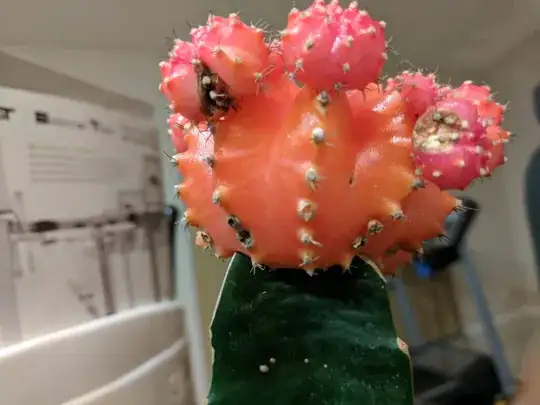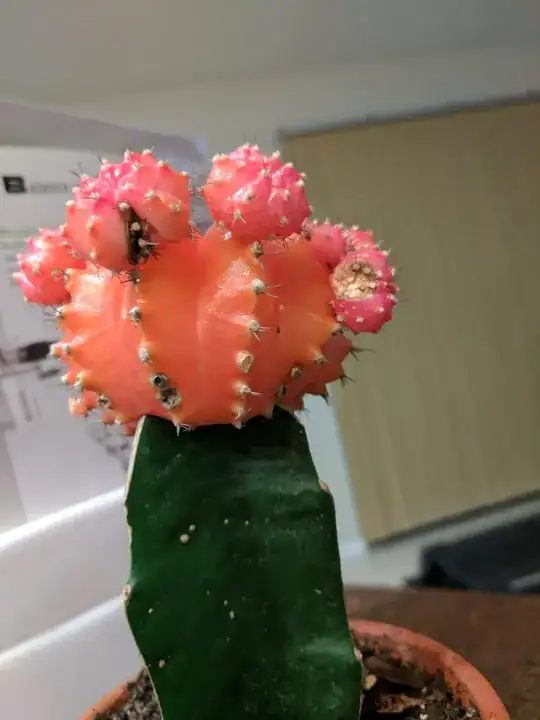I'm not sure what kind of cactus I have, but there seems to be some sort of black material on the side of it. What is it and what can I do to remedy it?
1 Answers
Your cactus is a grafted variety - the upper, coloured part, called Gymnocalycium, is grafted onto the lower part (Hylocereus varieties usually). The coloured Gymnocalycium lacks chlorophyll, so needs that to be provided by the Hylocereus, although other green cacti may be used.
I'm rather wondering what those tan coloured nodule like blobs are on the green part of the cactus - I'm wondering if they are scale insect. They're certainly not mealybug or spider mites, but scale is a strong possibility because those nodules shouldn't be there. I can't see any on the coloured part in the pictures, except towards the bottom on the left, where there appears to be a possible nodule inbetween the tufts of spines, but the blackened area might be from scale nymph feeding activity, and because they produce honeydew, sooty deposits often occur.
The usual cause of blackening on a cactus is overwatering, but the only part that is black is at the top of the coloured part, so that does not seem to be the problem, unless you can see blackened areas near the base, which is not visible in the photos. The corky coloured area on the right at the top is just from damage which may or may not be related.
I'd certainly try scraping off one of the dome shaped objects, just to see if you can, but the way to remove them is by using a cotton bud dipped in alcohol, applying that and then scraping off. Using a magnifying glass might enable you to see nymphs if they are present - more information here http://www.missouribotanicalgarden.org/gardens-gardening/your-garden/help-for-the-home-gardener/advice-tips-resources/pests-and-problems/insects/mealybugs/insect-pests-of-cacti-and-succulents.aspx.
Alcohol, and any treatment spray, may cause damage to some sensitive cactus, so if you use either of these in an attempt to kill off any nymphs, be sparing, or try on a small area first to see how the plant responds.
- 131,823
- 3
- 72
- 162

